Last surviving Dambusters pilot, 95, is selling the medals he was given for the famous raid to raise money for the Bomber Command memorial 'out of a sense of comradeship'
-
•Les Munro, 95, flew Lancaster on raid on dams using bouncing bombs
-
•He hopes to raise £50,000 for upkeep of the central London RAF memorial
-
•Built to remember 55,573 aircrew and groundstaff who died in WW2
-
•Not finished until 2013 after row with Germany over respect for their dead
-
•Sq Ldr Munro's Lancaster bomber was hit by Nazi fire over Holland on raid
-
•But he flew plane back to UK with a gaping hole, saving lives of his crew
By Martin Robinson for MailOnline
Published: 12:16, 2 March 2015 | Updated: 15:41, 2 March 2015
The last surviving Dambusters pilot is to sell his gallantry medals awarded for his part in the legendary raid and will donate the proceeds to the Bomber Command Memorial fund.
Squadron Leader Les Munro, 95, hopes to raise £50,000 for the upkeep of the central London memorial dedicated to the 55,573 airmen and ground crew killed during the Second World War.
The raid he helped lead - codenamed Operation Chastise - saw two dams breached by Dr Barnes Wallis' famous bouncing bombs, wiping out scores of armament factories in the Ruhr Valley.
Sq Ldr Munro, who is originally from New Zealand, said he visited the monument in Green Park in 2013 and was inspired to sell his medals 'out of comradeship' to his fellow servicemen who died.
He says losing his medals is a 'small sacrifice' compared to the one made by the tens of thousands from the RAF who made the ultimate sacrifice.
Scroll down for video
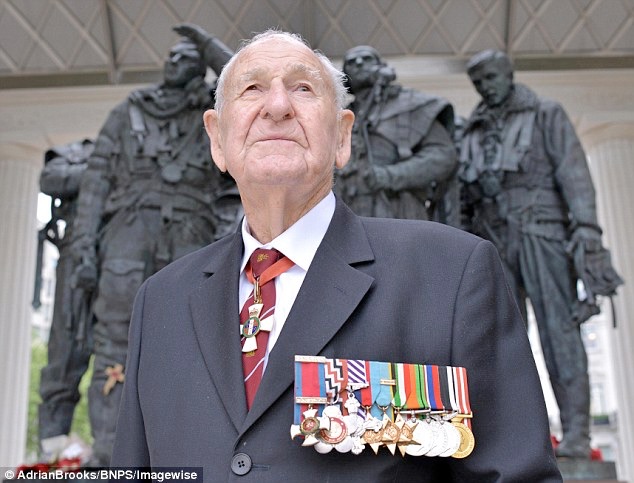
Donation: Squadron Leader Les Munro, 95, pictured, who is the last surviving Dambusters commander, hopes to raise £50,000 for the Bomber Command Memorial in London by selling his war medals
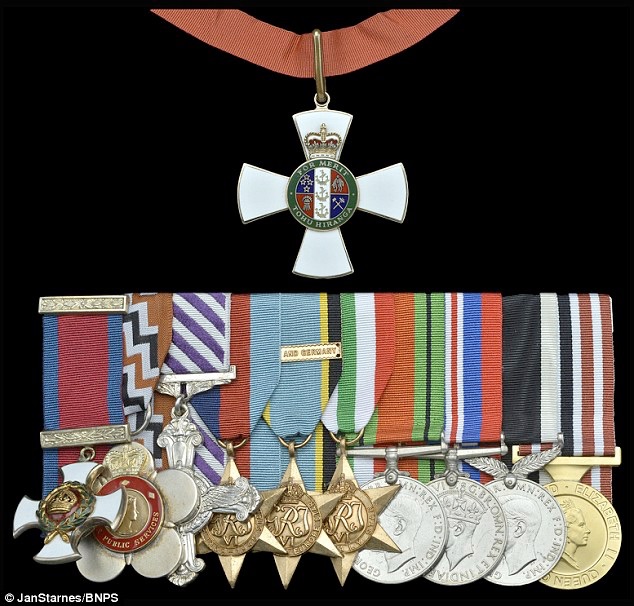
Up for auction: Les Munro will sell his medal for New Zealand Order of Merit, above and, pictured left to right his medals for Distinguished Service Order, New Zealand Queen's Service Order, Distinguished Flying Cross, 1939-45 Star; Air Crew Europe Star with clasp France and Germany, Italy Star; Defence and War Medals 1939-45, New Zealand Service Medal 1939-45, and the New Zealand 1990 Commemoration Medal
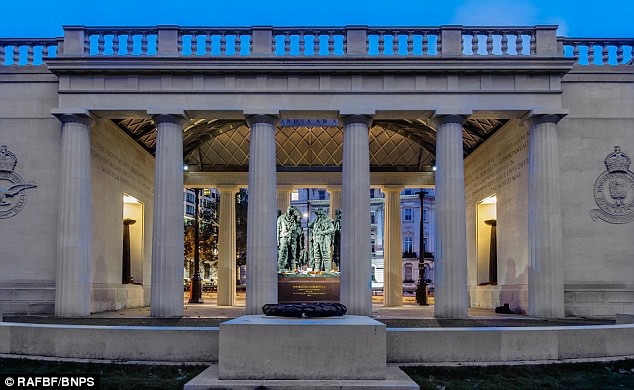
Remembered: The Bomber Command Memorial is dedicated to the 55,573 airmen and ground staff killed during the Second World War. It costs £50,000 a year to maintain, and Les Munro wants to help pay for it
The monument, built to remember the RAF aircrew and groundstaff who died on bombing operations in the war, was completed 67 years after the war ended after fears it was disrespectful to Germans killed in raids, especially in Dresden.
The charity, the RAF Benevolent Fund, has the duty to pay for is maintenance and upkeep in perpetuity at a cost of £50,000 a year, and Mr Munro wants to pay the annual bill.
Sq Ldr Munro, originally from New Zealand, said: 'The Memorial is a magnificent tribute to Bomber Command's fallen. It was a travesty it took 67 years before the loss of 55,573 lives was finally recognised.
'My reasons for donating my medals and flying log books to the fund were prompted by my visit.
'I could not help but think of the cost of its ongoing maintenance and with the feelings of the descendants of those 55,523 in mind believe that every effort be made to maintain the memorial in the best possible condition.
Les Munro Pilot and Dambuster talks about his experience
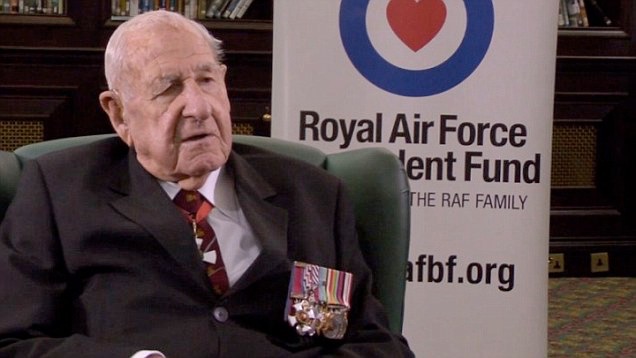
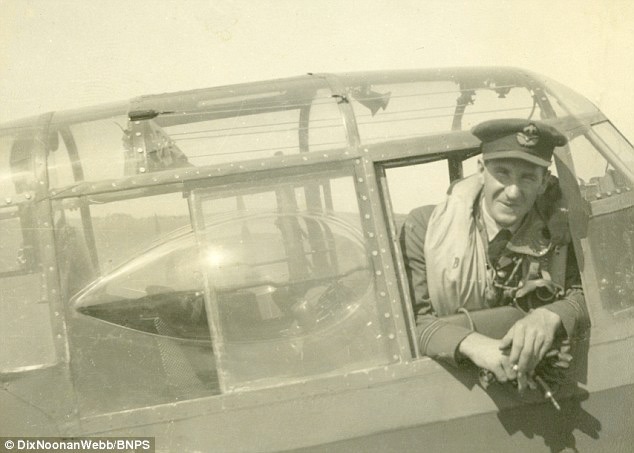
Service: Les Munro leaning out of the cockpit of his Lancaster Bomber , which he flew on the Dambusters raid. The plane was hit over Holland and he managed to fly it home with a gaping hole in the body
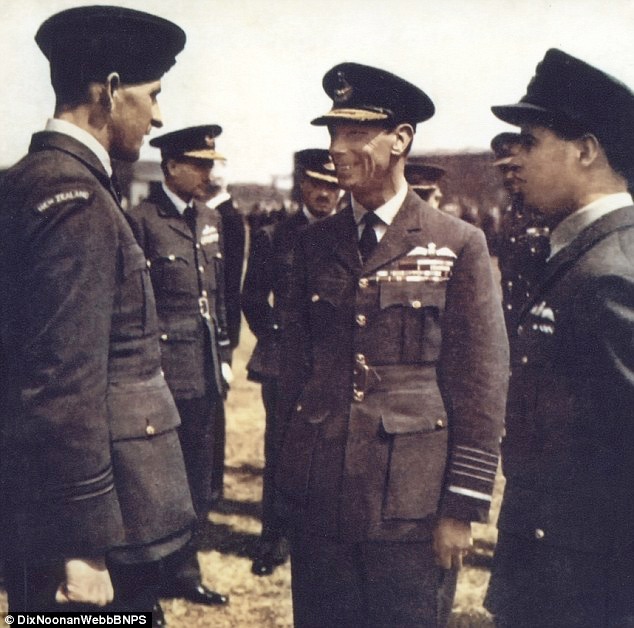
Hero: Les Munro (left) being introduced to George VI, centre, by Wing Commander Guy Gibson VC, right, who led 617 Squadron on the Dambusters raid
'My war service moulded me as a man; it gave me the confidence in my own ability and taught me to get on with my fellow men and value comradeship.
'It is because of that sense of comradeship and the equal importance of the act of remembrance that I now part company with my medals for the benefit of the Bomber Command Memorial.'
Out of the 19 commanding officers who flew on the famous 1943 raid to destroy three dams in Germany's industrial heartland, Sq Ldr Munro is the last one alive today.
Eight them were killed during the mission and a total of 53 out of 133 crew who flow were killed.
HOW FEARS OF OFFENDING GERMANS DELAYED BUILDING OF THE BOMBER COMMAND MEMORIAL
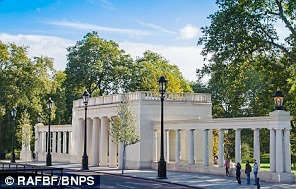
The men of Bomber Command suffered huge losses in the Second World War, with 45 out of every 100 airmen killed.
But permanent memorial for Bomber Command wasn't built for 67 years due to the controversy of thousands of German civilians who died during the bombings of its cities.
In 2010 German politicians called for plans for the memorial to be abandoned out of respect for the civilian casualties.
Backed by Bild, their country's biggest daily newspaper, they said the idea was offensive to the 25,000 victims of the raid on Dresden in 1945.
Bee Gees singer Robin Gibb, a key supporter, said at the time: 'Anyone speaking against it should be thoroughly ashamed of themselves.
'The whole world, including Germany, is free today because of Bomber Command's sacrifice.'
But 67 years after the war ended the £3.5million RAF memorial was created at the Piccadilly entrance to Green Park in London.
Built from Portlandstone, it is open to the sky with the entrance made from sections of a Halifax bomber shot down during the war. A sculpture inside marks the loss of the plane's seven crew.
On the day of the raid Sq Ldr Munro's Lancaster bomber was hit by a Nazi anti-aircraft shell on the raid over Holland, knocking a gaping hole in the fuselage and putting all communications out of use, forcing the crew to turn back to Britain still carrying its mine.
He was awarded the Distinguished Service Order for the raid. Sq Ldr Guy Gibson, who led the mission, received the Victoria Cross.
Sq Ldr Munro was also awarded the Distinguished Flying Cross for bravery shown during 58 sorties over Europe.
In a tragic twist of fate, when his mother opened the door to an official delivering an unopened telegram with news of his award of the DFC she feared he was dead and collapsed with an aneurism and died within a week.
After being given the devastating news Sq Ldr Munro was offered the chance to be taken off bombing operations but declined.
Serving with 97 and then 617 Squadron, he bombed German aircraft and armament factories, V1, V2 and V3 rocket sites, E and U-Boats pens and tunnels all over Europe.
On the eve of D-Day in 1944 he dropped aluminium strips in the English Channel to trick German radar operators into thinking the invasion was taking place at Calais rather than Normandy to the south.
The £50,000 expected from the sale of his medals and log books will be enough to pay for the maintenance of the memorial for a whole year.
Mike Neville, director of strategy and fundraising at the RAF Benevolent Fund, said: 'We are enormously grateful to Les for his donation. It was very much his decision and he approached us with it.
'Les will consider it a small sacrifice compared to the sacrifice made by thousands of his comrades in the war but to us it really is a big one because the proceeds of the sale should pay for a whole year's maintenance.'
The medals, the also include the New Zealand Order of Merit, are to be sold by London auctioneers Dix Noonan Webb.
Christopher Hill, a director at the auction house, said: 'Les Munro is a remarkable man whose spirit of adventure has never left him.
'It is entirely typical of him that he is selling his medals, log books and other memorabilia to help ensure that the memory of his dead comrades will never fade.'
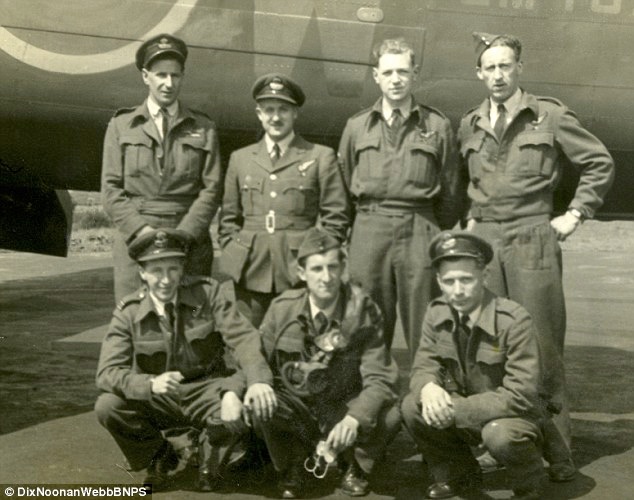
Comrades: Les Munro (centre at front) with his crew in front of the Lancaster Bomber he flew on the raid that smashed two dams
Sq Ldr Munro's father was Scottish and emigrated to New Zealsand in 1903 and became a shepherd.
He joined the Royal New Zealand Air Force in 1941 and arrived in Britain the following year, flying with the 97 Squadron.
THE DAMBUSTERS RAID: HOW ATTACK ON RUHR VALLEY HELPED HALT NAZI WAR MACHINE
The Dambusters raid, codenamed Operation Chastise was an attack on German dams carried out on May 16 and 17 1943 by the RAF's 617 Squadron.
Bombers were using a specially developed 'bouncing bomb' invented and developed by Dr Barnes Wallis.
The pilots flew at 100ft in the night, blasting the Mohne and Eder dams, causing major flooding in the western Ruhr Valley.
Two hydroelectric power stations, factories and mines were destroyed and damaged, while around 1,600 people drowned.
The impact of the raid made front page news across the world and became better known as the Dambusters Raid.
He was the captain for bombing raids on aircraft and armament factories in Berlin, Essen, Dusseldorf, Cologne, Hamburg, Stuttgart, Milan and Turin.
In 1943 he volunteered for the 617 'Dambusters' Squadron and was reportedly chosen by Guy Gibson to take part in the dams raid.
Sq Ldr Munro learned to fly Lancaster bombers at below tree-top height at 200mph in preparation for the raid.
On one such flight over Lincolnshire he was nearly killed when a seagull hit his cockpit windscreen 'like a cannonball' and landed between him and his co-pilot.
He went on to practice for the mission over Derwent Water in the Lake District and the Fleet at Chesil Beach.
Gibson, who was shot down and killed a year after the mission, said of him: 'He was a most charming fellow, with an excellent operational record. He was one of those types who can always be the right thing at the right moment.'
Two days after the Allied invasion of Europe, Sq Ldr Munro dropped the first 'Tallboy' 12,000lbs bomb on a tunnel in southern France that enemy Panzer tanks were using to reinforce Germany army in Normandy.
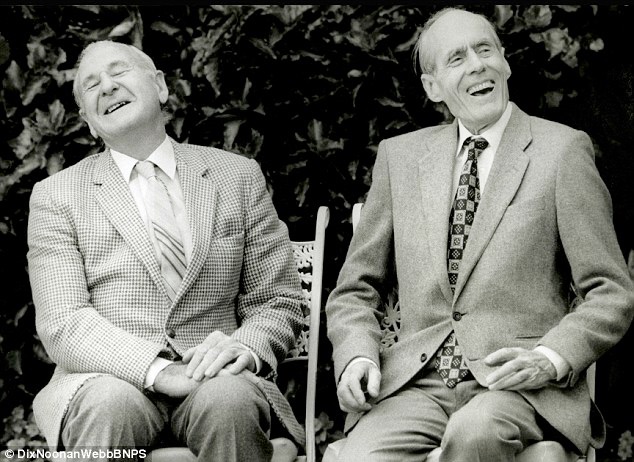
Old friends: Les Munro (left) shares a joke with Wing Commander Leonard Cheshire VC, who took over as 617 Squadron commander, at a 1986 reunion in New Zealand
He then led successful raids to wipe out E-boat and U-boat pens in Le Havre and Boulogne, successful missions that helped the Allied take control of Normandy and France.
After the war he returned to New Zealand, studied agriculture and worked for the State Advances Corporation which managed state-owned farms.
He got into local politics and served as mayor of Waitomo, a town on the northern island of New Zealand.
He was appointed to the Queen's Service Order (Q.S.O.) in 1991.
Sq Ldr Munro said: 'I consider myself a fortunate survivor, 'Lady Luck' having sat on my shoulder on several occasions. Yet I think that I left New Zealand on the basic premise that if I was going to cop it, so be it. What will be, will be.'
'When fellow officers that I knew relatively well were lost on operations I would feel a brief period of sadness but that had to be quickly relegated to the background of my thoughts.
'There was a job to do and the loss of a colleague could not be allowed to influence how I carried out that job. My duty was to carry out the next operation without emotional distraction. Grief could not be allowed to distract from duty.'
Sq Ldr Munro's medals are being sold in London on March 25.